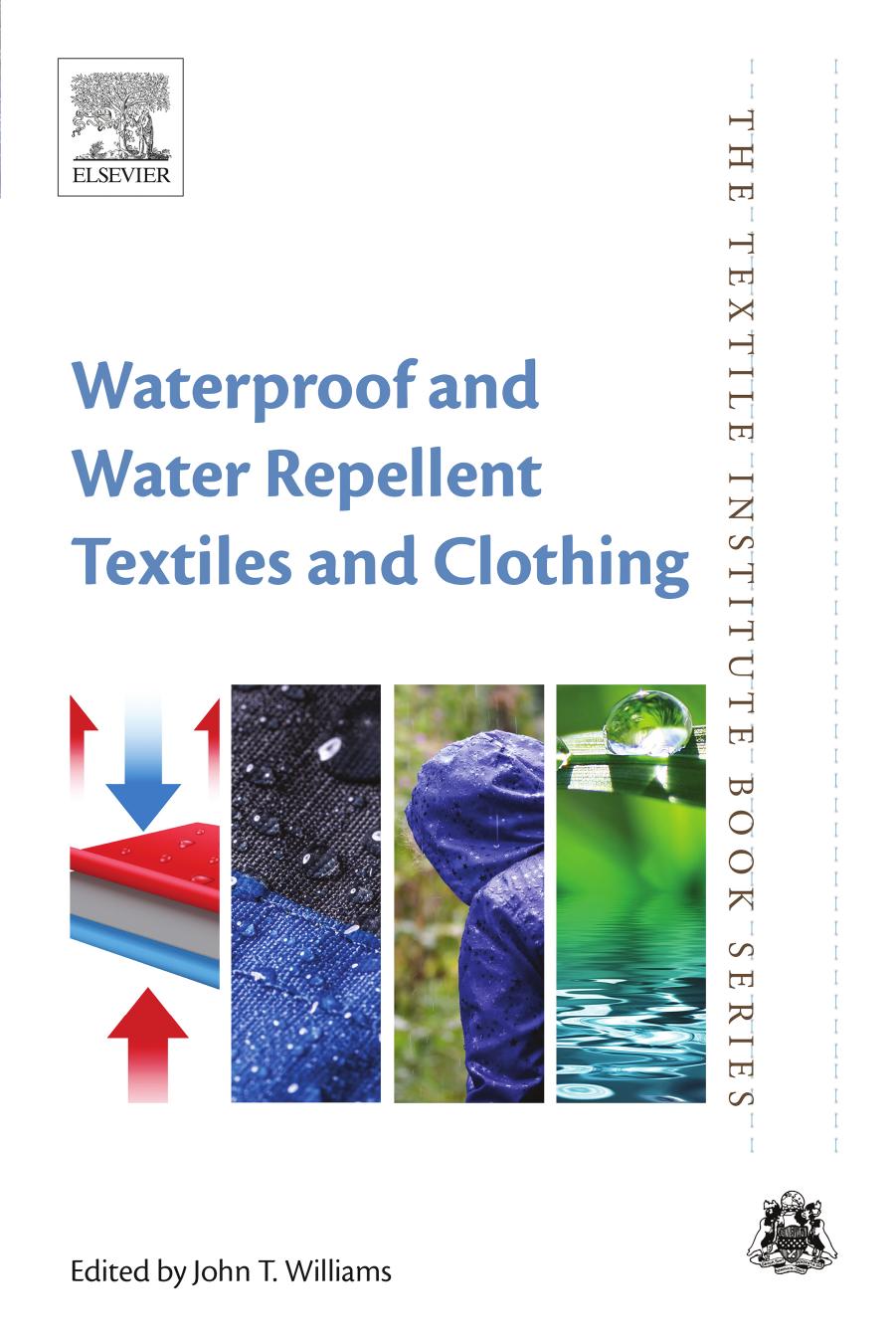Waterproof and Water Repellent Textiles and Clothing by John T Williams

Author:John T Williams
Language: eng
Format: epub, pdf
ISBN: 9780081011348
Publisher: Elsevier Ltd.
Published: 2017-11-19T16:00:00+00:00
Fig. 11.4 Schematic diagrams of the expected liquid–vapor interface on two geometries with different equilibrium contact angles. The capillary force can resist the wetting of the grooves if ψ < θ (Cao et al., 2007; Tuteja et al., 2007).
When ψ is larger than the equilibrium contact angle θ, the meniscus (water–air interface) in the groove is concave (seen from the water side). In this case, the net force Fnet generated by the meniscus is downward so that water will enter the grooves and fully wet the surface. For ψ < θ, on the other hand, the meniscus is convex and Fnet acts upward, thereby obstructing the penetration of water into the groove. Cao et al. (2007) demonstrated that re-entrant structures are desirable to construct more stable superhydrophobic surfaces by showing that an originally hydrophilic silicon surface increased the water contact angles to approximately 139–162 degrees when re-entrant structures were fabricated on the surface (Cao et al., 2007). Other studies have also demonstrated that properly designed re-entrant structures, such as dual layer re-entrant structures, can provide superoleophobic surfaces, repelling extremely low surface energy liquids (Tuteja et al., 2007, 2008). In summary, low surface energy and surface roughness (including re-entrant structure) are the key design parameters to attain superhydrophobic surfaces.
Download
Waterproof and Water Repellent Textiles and Clothing by John T Williams.pdf
This site does not store any files on its server. We only index and link to content provided by other sites. Please contact the content providers to delete copyright contents if any and email us, we'll remove relevant links or contents immediately.
| Concrete | Extraction & Processing |
| Fracture Mechanics | Materials Science |
| Metallurgy | Polymers & Textiles |
| Strength of Materials | Testing |
Whiskies Galore by Ian Buxton(41878)
Introduction to Aircraft Design (Cambridge Aerospace Series) by John P. Fielding(33064)
Small Unmanned Fixed-wing Aircraft Design by Andrew J. Keane Andras Sobester James P. Scanlan & András Sóbester & James P. Scanlan(32743)
Craft Beer for the Homebrewer by Michael Agnew(18140)
Turbulence by E. J. Noyes(7935)
The Complete Stick Figure Physics Tutorials by Allen Sarah(7307)
Kaplan MCAT General Chemistry Review by Kaplan(6866)
The Thirst by Nesbo Jo(6826)
Bad Blood by John Carreyrou(6552)
Modelling of Convective Heat and Mass Transfer in Rotating Flows by Igor V. Shevchuk(6391)
Learning SQL by Alan Beaulieu(6209)
Weapons of Math Destruction by Cathy O'Neil(6142)
Man-made Catastrophes and Risk Information Concealment by Dmitry Chernov & Didier Sornette(5921)
Digital Minimalism by Cal Newport;(5663)
Life 3.0: Being Human in the Age of Artificial Intelligence by Tegmark Max(5474)
iGen by Jean M. Twenge(5366)
Secrets of Antigravity Propulsion: Tesla, UFOs, and Classified Aerospace Technology by Ph.D. Paul A. Laviolette(5309)
Design of Trajectory Optimization Approach for Space Maneuver Vehicle Skip Entry Problems by Runqi Chai & Al Savvaris & Antonios Tsourdos & Senchun Chai(5011)
Pale Blue Dot by Carl Sagan(4909)
